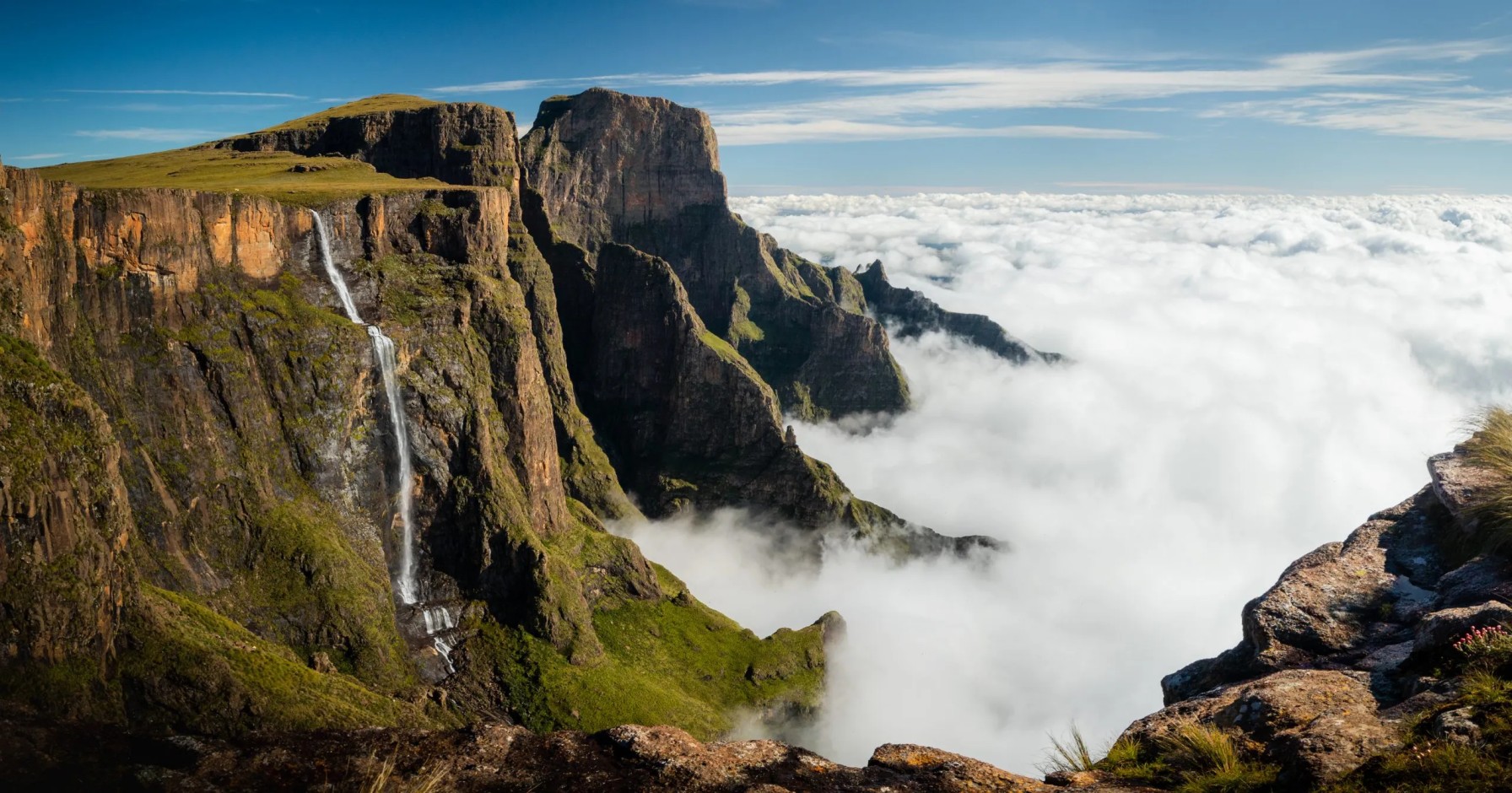The short and simple answer for Which is the 2 highest waterfall in the world? The second highest waterfall in the world is Tugela Falls, located in the Drakensberg (Dragon’s Mountains) of Royal Natal National Park in KwaZulu-Natal Province, South Africa.

Exploring Tugela Falls
Tugela Falls is a series of seasonal waterfalls with a total drop of 948 meters (3,110 feet) in five free-leaping falls. Its highest single drop is approximately 411 meters (1,348 feet), making it a truly spectacular sight. The falls are particularly impressive during the heavy rains of late summer. Exploring Tugela Falls is an adventure that offers breathtaking natural beauty and a glimpse into the unique landscape of South Africa’s Drakensberg region. The journey to the falls is as captivating as the destination itself. The trails leading to Tugela wind through diverse terrains, including lush forests, rocky paths, and steep slopes, provide hikers with a challenging yet rewarding experience. Along the way, visitors are treated to spectacular views of the Drakensberg Amphitheatre, a stunning cliff face that forms part of the escarpment. The falls, visible from various vantage points along the hike, display a remarkable blend of power and grace. The cascading water plunges over the basalt cliff in a series of leaps, creating a visual spectacle that changes with the seasons. In the summer months, the falls are at their most powerful, fed by the seasonal rains, while in winter, they become more subdued, often icing over in colder temperatures. The journey to Tugela Falls not only offers a chance to witness one of the natural wonders of the world but also provides an opportunity for reflection and connection with nature. The tranquil surroundings and the rhythmic sound of the falling water create a serene atmosphere, inviting visitors to pause and appreciate the majesty of the natural world.
Geographical and Climatic Setting
The source of Tugela Falls is the Tugela River, which begins its journey in the majestic Drakensberg Mountains. This area is known for its stunning natural beauty, characterized by rugged peaks and sweeping valleys. The climate in the Drakensberg region varies greatly, from snowy winters to hot, wet summers, which greatly influences the flow and appearance of the falls.
Historical and Cultural Significance
The historical and cultural significance of Tugela Falls extends deep into the heritage of South Africa. The Drakensberg region, where the falls are located, has been inhabited for thousands of years, most notably by the San people, whose ancient rock art adorns the cave walls, telling stories of their lives and beliefs. These paintings are a profound testament to the historical human presence in this region, making it a site of both natural and anthropological importance. The Zulu people, who later inhabited the area, also hold the falls in high esteem, intertwining them into their folklore and traditions. Tugela Falls, therefore, is not just a natural wonder but a cultural landmark, representing a bridge between the past and the present, and offering insights into the diverse and rich tapestry of South African history and culture. Its presence continues to be a source of inspiration and spiritual significance for the local communities, symbolizing the timeless connection between humans and the natural world.
Flora and Fauna
The area around Tugela Falls is rich in biodiversity. The Drakensberg is home to a variety of flora, including the rare Drakensberg cycad and over 2,000 plant species. Wildlife in the area includes several antelope species, baboons, and a diverse array of birdlife.
Visiting Tugela Falls
Tugela Falls is accessible to visitors, with several hiking trails leading to the falls. The most popular is the Tugela Gorge Trail, which provides stunning views of the falls and the surrounding landscape. For the more adventurous, the Amphitheatre and the Sentinel Trail offer challenging hikes and breathtaking vistas.
Environmental Considerations
The environmental considerations surrounding Tugela Falls are crucial in the context of conservation and sustainable tourism. The region’s delicate ecosystem, home to unique flora and fauna, is vulnerable to the impacts of climate change and human activity. Increased visitor traffic brings challenges like erosion and litter, necessitating responsible tourism practices to preserve this natural wonder. Conservation efforts are vital to maintaining the biodiversity and natural beauty of the area, ensuring that Tugela Falls remains a pristine and thriving environment for future generations. Environmental education and awareness are key in promoting sustainable interaction with this remarkable landscape.
Tugela Falls, with its awe-inspiring heights and natural beauty, stands as a testament to the power and majesty of the natural world. It offers not only a spectacular visual experience but also a connection to the rich cultural and natural heritage of South Africa. As the second-highest waterfall in the world, it remains a must-visit destination for nature enthusiasts and those seeking to explore the wonders of our planet.

